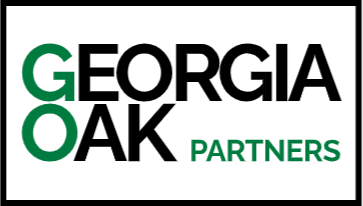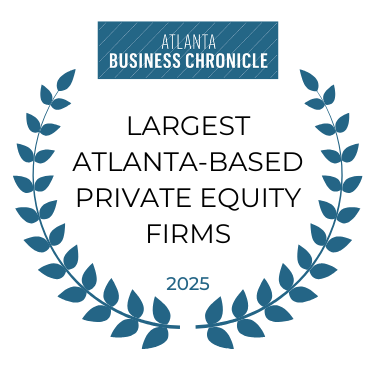Insights
NEW FEATURES BY DATE
List of Services
-
6/6/2025 How to Position Your Brand for Acquisition: A Marketing Playbook for Sellers6/6/2025
-
4/16/2025 Cultivating a Culture of Accountability and Empowerment4/16/2025
-
1/1/2025 Case Study: Preserving Legacy While Driving Growth through Minority Deals1/1/2025
-
5/20/2024 Georgia Oak Associate Job Description5/20/2024
-
3/4/2024 1851 Franchise: "Private Equity and Sports: The MVP Playbook"3/4/2024
-
9/21/2023 (Atlanta Business Chronicle) Atlanta Braves legend joins Georgia Oak Partners9/21/2023
-
4/11/2022 Can You Raise Prices in This Market? If Not, When?4/11/2022
-
12/18/2021 Putting People First12/18/2021
-
6/30/2021 Staffing Industry Insights6/30/2021
-
3/18/2021 Remote Work: A Permanent Part of Every Industry3/18/2021
-
2/4/2021 A Year of Growth: Focusing on Human Capital in 20212/4/2021
-
8/27/2020 COVID-19 Leadership with Page Siplon, CEO of TeamOne Logistics8/27/2020
-
8/27/2020 Culture Shifts During COVID-19 and Beyond8/27/2020
-
7/23/2020 Miked Up: Organizational Diversity - Volume 2, Part 17/23/2020
-
7/23/2020 Georgia & National Labor Market Trends: A Look at Six Key Industries7/23/2020
-
6/16/2020 Harnessing the Power of Technology6/16/2020
-
6/16/2020 Virtual Communication in Uncertain Times6/16/2020
-
5/27/2020 Miked Up: Volume 1, Part 15/27/2020
-
5/6/2020 Navigating the New Normal5/6/2020
-
5/6/2020 The Front Lines of Business Continuity5/6/2020
-
1/8/2020 Build Successful Teams with These 5 Elements1/8/2020
-
9/7/2018 Recruiting and Retaining Manufacturing Talent9/7/2018
-
6/5/2019 Minority vs. Majority Deals6/5/2019
-
3/1/2019 Video Case Study: Sailfish Boats3/1/2019
-
11/28/2018 What Is Your Legacy?11/28/2018
-
4/5/2018 Navigating the Sale Process: From LOI to Post-Close4/5/2018
-
10/18/2016 Selling to Your Management Team10/18/2016
-
7/25/2025 Scaling with Intention: Growth Lessons from the Front Lines7/25/2025
Cultivating a Culture of Accountability and Empowerment
The Best Teams Own Their Work. Here’s How to Get There.
Early in my career, it might be fair to say that I didn’t know what “company culture” meant or how it even impacted an organization. Fortunately for me, I experienced working for a company that invested in my success and prioritized a positive experience at work. In turn, that built confidence in my abilities and motivated me to work harder. This was accelerated by how our management empowered and trusted their employees. I was given the opportunity to collaborate with everyone – from PhDs to hourly employees – in an environment where we all wanted to support each other's success, make a difference, and ultimately take care of our families. That visibility gave me insight into the value of diversity, empowered teams, and proactive communications that drive a cohesive organization. I learned that, at its core, company culture is about the day-to-day experiences within the company that create an overall positive experience.
Those early days created a platform for me to build from when leading organizations and solving complex business issues. I came to understand that the success of those teams resides in cultural pillars of trust, respect, empowerment and accountability. Plus, I learned that you can have fun while you're doing it! I have seen firsthand from leading teams all over the world to working with partner companies at Georgia Oak how this approach can transform not just businesses, but hugely impact the entire organizational experience in a positive way.
The Process
Building a strong culture isn’t about policies or corporate slogans, it’s about how people show up for each other every day. This starts in an environment where people have positive attitudes and winning beliefs. I, myself, have even experienced this while checking in at the front desks of clients - you can feel the energy and belief in a simple greeting. It ultimately resonates in a culture of accountability and empowerment which gives employees "want/take" ownership in pushing the organization forward.
1. Define Your Cultural Foundations
Good culture starts with a shared mission and clear values. It’s not enough to post them on a wall; employees need to feel them in the way work gets done. When people believe in the bigger picture, accountability becomes second nature.
2. Commitment & Alignment
Leaders set the standard. How you treat your employees shapes how they treat their work. Clear communication, respect, and follow-through are essential. Employees are more likely to take ownership when they see leadership “walking the walk” and listening with intent.
3. How Are Decisions Made?
Rather than having the CEO make all decisions from the corner office, the best organizations empower employees to think critically, solve problems, and make their own decisions. Trusting your team doesn’t just lighten the load for leadership—it strengthens engagement and drives better outcomes. Having patience and allowing people to make mistakes reinforces the culture you're trying to achieve.
4. Foster a Growth Mindset
Encourage curiosity and continuous learning. Employees should feel safe to challenge ideas, take smart risks, and develop new skills. A culture that values growth over perfection builds resilient, high-performing teams.
5. Recognize and Invest in Your Team
People who feel valued are more engaged and committed. Celebrate wins, acknowledge hard work, and invest in professional development. When employees see that leadership recognizes and supports their contributions, they’ll show up with greater purpose and accountability.
How Do You Know It’s Working?
Culture shows up in how people feel, work, and grow. Here are some ideas of how to recognize whether accountability and empowerment are truly taking root:
Growth & Internal Mobility. A thriving culture creates opportunities. Track promotions and internal career moves.
Customer Satisfaction. Happy employees make for happy clients. Customer feedback often reflects company culture.
Participation in Engagement Initiatives. The best cultures inspire action. Look at who’s investing time in development, mentorship, and growth.
Employee Feedback & Satisfaction. When people feel heard, they speak up. Pay attention to survey results, team discussions, and unfiltered feedback. When doing surveys, it is very critical to take action, make it visible, and sustain the change.
Retention & Exit Interviews. If employees stay and grow, it’s a good sign. If they leave, their reasons could tell an important story – be sure to listen and understand. When you hear that statement: “I am leaving for a better opportunity,” use that time to challenge yourself and ask why.
Employee Referrals. When people enjoy where they work, they invite others in. Referrals speak volumes.
What If There’s Resistance to Cultural Change?
Cultural change isn’t always easy. People naturally resist what feels uncertain or disruptive. That resistance often comes from fear of the unknown, concerns about job security, or the feeling of losing control. From my experience, the key is understanding the issue and addressing concerns head-on with full transparency.
Open communication is critical. Employees need to know why change is happening and how it impacts them. Engaging them in the process, rather than forcing change upon them, builds trust and buy-in. A good leader will listen, provide clarity, and create an environment where employees feel supported rather than sidelined.
That said, not everyone will get on board. At some point, if someone is unwilling to align with the culture the company is building, tough decisions may be necessary. A phrase I heard early in my career sticks with me: “If you can’t change the people, change the people.” A strong culture can only thrive when the team believes in it and is willing to uphold it.
What does a Culture of Accountability and Empowerment look like?
Developing and maintaining a positive workplace culture certainly does not happen overnight. Once you put the work in to create an environment that fosters collaboration and growth, it’s critical to be unrelenting in sustaining it.
Leaders that communicate regularly, are visible and accessible to the organization, and embrace the common elements of a strong culture will see positive results grow over time. At the end of the day, everyone wants to have fun and make a difference in their professional lives – leaders who take an intentional focus on a positive culture will give their employees the best chance of doing so.
At Georgia Oak, we’re committed to enhancing your business and helping founders grow their legacies
to their fullest potential. If you find we’re a good fit for your next step, please reach out to us.



